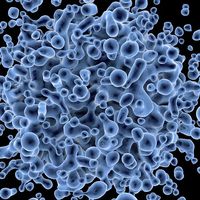Guidelines Established to Build Tolerance to Food Allergens
Cases of children with food allergies are increasing each year. Unfortunately, scientists are not exactly sure why. Nuts and shellfish are among the most common food allergies which range in severity. Children, as well as adults, could experience extreme symptoms including vomiting, diarrhea, cramps, hives, rash, heavy breathing, and low blood pressure. There are multiple facets of research investigating ways to better treat and even cure food allergies. Some treatments include antihistamines for mild symptoms, but others could include oral immunotherapies. While researchers try to understand more about the underlying mechanism food allergies, a cure remains elusive. However, researchers have recently released guidelines to help parents monitor and build their child’s food allergen tolerance.
The group of researchers at McMaster University in Hamilton, Ontario, Canada, released the first-ever guidelines designed to help families control their child’s food allergens. The international guidelines were published in the Journal of Allergy and Clinical Immunology. In the publication, researchers suggest providing small amounts of allergen to patients and slowly building the amount of allergen over time.
Previously there were no standardized protocols for clinicians to provide patients. The recently published guidelines close the gap on food allergen therapy administration. The guidelines direct parents to administer this therapy at home. This is not only a benefit highlighting the convenience of this therapy but is also a limitation. The risks are greater if the therapy is not provided by or in the presence of a healthcare provider. In the clinic or a healthcare setting, the trained provider can monitor for symptoms and observe any reactions that occur. Consequently, the healthcare provider can intervene with the appropriate treatments in response to severe reactions.
The established protocol is the first-ever process recorded for food allergy tolerance build-up. It has never been standardized previously and is an incredible move forward to help patients actively mediate their food allergy symptoms. Dr. Douglas Mack, lead scientist on the publication, outlines critical recommendations for patients and their caregivers, including: (1) a standardized education of the procedure, (2) established parental supervision during administration, (3) previously identified risks with appropriate interventions in place, (4) clear understanding of goals, and (5) agreement to the treatment in a written consent form.
The article outlined recommendations based on a panel of 36 international allergists that identified different considerations for consensus when administering oral immunotherapy to patients in the home. The recommendations help to standardize protocol that healthcare providers can apply and train patients on including the risks, benefits, and alternatives of the therapy. Communication between the physician and patient is critical to prepare patients for administrating the therapy at home. The immunotherapy must be administered every day, which is why it is critical for caregivers to understand the process. Additionally, untrained patients can put themselves in danger by not understanding the potential risks. Once the patients and caregivers understand the treatment along with the risks and benefits, it generates a safe environment to anticipate undesired challenges. Overall, these guidelines establish the standard in the field providing accessible treatment for patients.
Published, McMaster University, Journal of Allergy and Clinical Immunology, Douglas Mack








